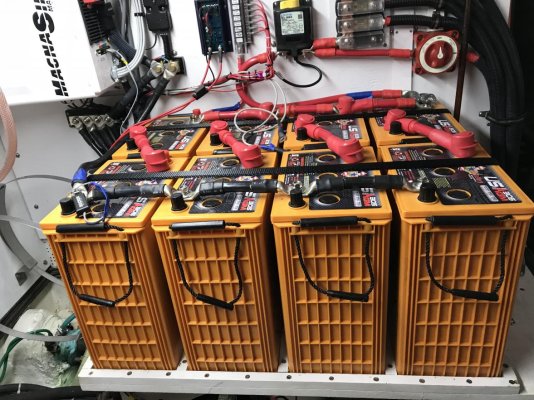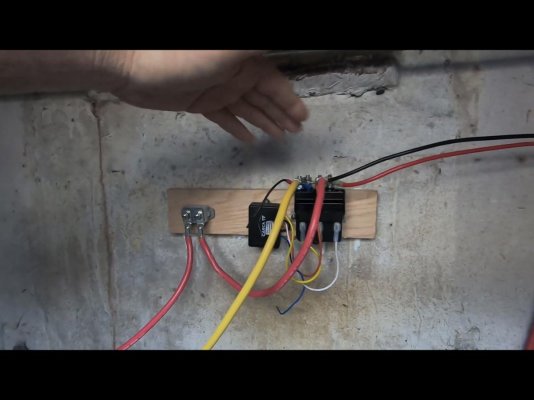angus99
Guru
I’m getting closer to installing a transom-mounted davit. It’s looking like the Dinghy Butler won out. It comes with a Terra 25SR winch that has a pulley system that reduces the lifting force by 1/2 or 2/3 (I’ll verify once I know).
The dinghy and all equipment would weigh an absolute max 600 lbs—likely less. The davit is a classic transom-mount that pivots near the swim platform and lifts the dinghy up and forward until it’s resting near the transom.
I’m looking for a way to calculate the load the winch will be handling, which (along with wire run distance and the other usual factors) will determine the amp draw and the wire size and circuit protection I’ll need.
I’m not sure how to extrapolate the amp draw from the table below, factoring in the reduction from the pulley arrangement. Is it simply a matter of determining the mechanical advantage from the pulleys and applying it to both of the values in the Terra table below? If the pulley advantage is 2:1, can I assume 50% less work by the winch = a 50% reduction in amp draw?
Thanks in advance.
The dinghy and all equipment would weigh an absolute max 600 lbs—likely less. The davit is a classic transom-mount that pivots near the swim platform and lifts the dinghy up and forward until it’s resting near the transom.
I’m looking for a way to calculate the load the winch will be handling, which (along with wire run distance and the other usual factors) will determine the amp draw and the wire size and circuit protection I’ll need.
I’m not sure how to extrapolate the amp draw from the table below, factoring in the reduction from the pulley arrangement. Is it simply a matter of determining the mechanical advantage from the pulleys and applying it to both of the values in the Terra table below? If the pulley advantage is 2:1, can I assume 50% less work by the winch = a 50% reduction in amp draw?
Thanks in advance.




